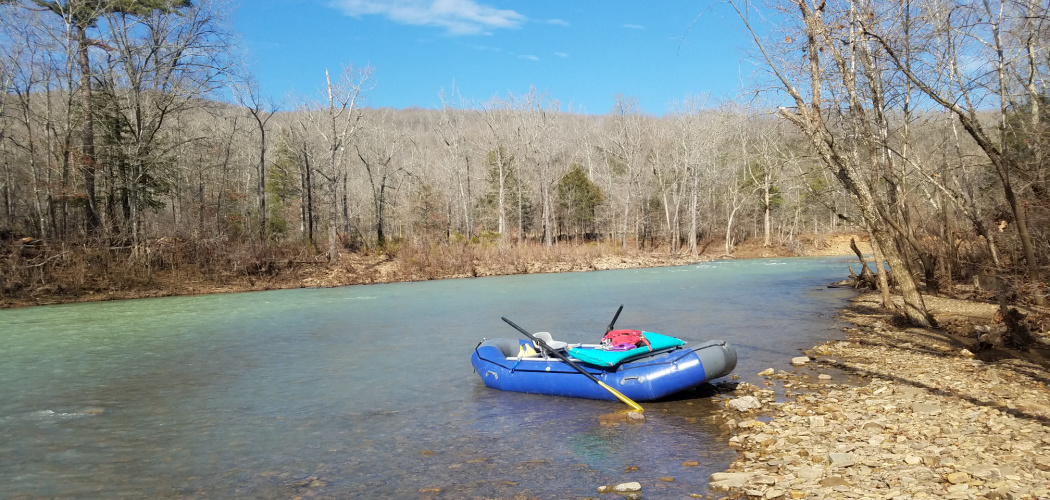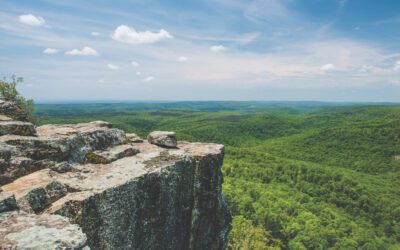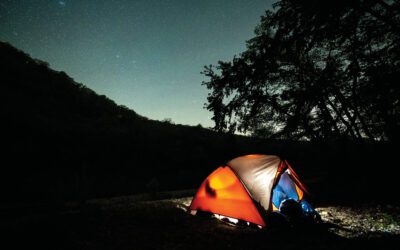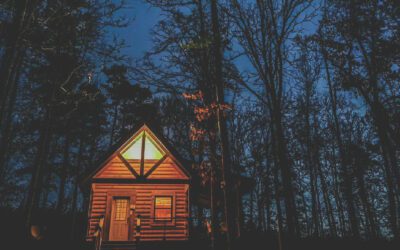[title subtitle=”WORDS B.J. Heilman
IMAGES Lydia Dobbins][/title]
As the calendar turns to March and peak cabin fever has set in from a long winter, we inevitably begin to look toward spring. The days gradually get longer, the temperature slowly warms, and the rains become more frequent. Every fiber in our body is telling us to get outside and enjoy the change of seasons.
March often marks the beginning of the floating season here in The Natural State. We are blessed with hundreds, if not thousands, of miles of floatable water within a few hours from home. Early spring presents some of the best floating our state has to offer. Small (or no) crowds, plentiful water, and no leaves on the trees provide a more immersive river experience than in the summer months. The occasional bald eagle, river otter, and deer sightings can be commonplace too.
Without question, early spring can be a fantastic time to get on the water but can present many challenges to the average recreational kayaker or canoer. Temperatures can shift from seventy degrees and sunny to forty and rainy in the blink of an eye. Since the water has not had the chance to warm after months of cold weather and inadequate sunshine, it’s important to be prepared for these types of conditions.
Being prepared for floating this time a year goes beyond dressing appropriately. Before venturing out this time of year, the first thing you should consider is a proper evaluation of your skill. Do you have the requisite skills to paddle this stretch of river safely? If not, then look to easier stretches of river or flat-water lake paddling.
After assessing your skill level, be sure to check the river levels and weather forecast. A river that is going down with no rain in the forecast is a safe bet. A river running optimally or slightly high with more rain in the forecast is a riskier proposition. Know your mileage and allow enough time to complete your desired float.
Some of my favorite early spring destination floats are the Buffalo River, the middle and lower Kings River, and the Ouachita River. These rivers are generally slower paced, have fewer rapids, and are easier to float for the novice as opposed to the Upper Mulberry River, Big Piney River, and the Cossatot River.
Once you know the levels and the temperature are adequate, we must prepare ourselves for the cold water. Floating is inherently a wet sport, and even with the best layers and watercraft, you will get splashed at some point. You must always be dressed to swim, even if the section of river is well below your skill level. Hypothermia can be a real concern this time of year. If water temperature is below sixty degrees, thermal insulation is a must. If the water temperature is above sixty, and the combination of air temperature and water temperature is greater than one hundred twenty, then hypothermia does not pose a significant risk.
Proper base layers and a dry outer shell will go a long way to keep you warm, dry, and happy while on the water. Wool or synthetic base layers are ideal over cotton because they still retain their heating properties even when wet. Air temperature, water temperature, wind, and sunshine all affect how I layer before an outing. Generally, I opt for a heavy base layer, mid-weight top, and occasionally a puffy down or synthetic jacket under my dry suit on the coldest days.
While a dry suit is hands down the best outer layer for cold-weather paddling, most cannot or will not spend a thousand dollars or more on a high-end dry suit. For some, even a few hundred dollars on neoprene wet suits, dry tops, and dry pants might be too much for an activity they only participate in a couple of times a year in these conditions. A quality pair of rain pants and a rain jacket to repel water, worn over wool or a synthetic base layer will suffice for recreational floaters.
Wearing a P.F.D. (personal floatation device) – also known as a life jacket – adds an extra layer of warmth to your core and keeps you afloat in the event of a swim. Finish off your attire with a pair of neoprene gloves or pogies, one or two pairs of wool socks under a pair of neoprene kayak booties, a beanie for head warmth, and you have dressed appropriately.
Now you must consider a quality dry bag to pack extra layers and essentials. In the event of a swim, changing to warm, dry layers is crucial. Even if you do not need them, your companions will appreciate the extra fleece jacket when they are shivering after a cold dunk in the river.
Along with your extra layers, creature comforts are a necessity to carry in your dry bag. A comprehensive first aid kit, thermal space blanket, hand warmers, fire starter, headlamp, and snacks should be top priorities. I prefer warm food and drinks on cold river trips over a sandwich any day of the week. I often carry a couple of double-walled stainless-steel containers, like a Hydro Flask, with soups, coffee, or hot chocolate. On some occasions, I will even bring my Jetboil stove for cooking or reheating meals. Chocolate candy bars or trail mix are never out of reach either. Sweet treats not only help to kick start your metabolism but also boost endorphins.
When you are cold and wet, most think starting a fire is the first thing they should do. However, starting a fire should be your last priority. Getting dry layers on and kick starting your internal furnace should be your top priority. After changing layers, huddling under a space blanket with multiple people and consuming calories will warm you significantly faster than the superficial warmth of a fire.
By taking the proper precautions and preparing for worst-case scenarios, you can extend your paddling season past the warm summer months and enjoy the less crowded rivers throughout our state. Grab your paddle, boat, lifejacket, warm layers, and get out to enjoy the rivers The Natural State has to offer.
Be sure you check the links below for river levels.
– americanwhitewater.org
– ar.water.usgs.gov/buffaloriver/
Items to include in your drybag
Watershed Ocoee Dry Bag
AMK Medical Kit
Space Blanket
Wilderness Wipes
Pocket Bellow
Patagonia Capilene Quarter-Zip
NRS Neoprene Gloves
Extra Beanie
Petzl Bindi Headlamp
Shar Snacks Trail Mix
Fire Starter & Lighter
Patagonia Capilene Bottoms
Planning your next outdoor adventure? Visit The Woodsman Company in Fort Smith, Arkansas for all your adventure needs! 5609 Rogers Ave., Fort Smith, Arkansas
479.452.3559
thewoodsmancompany.com




